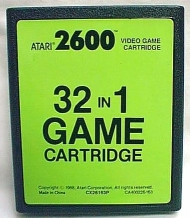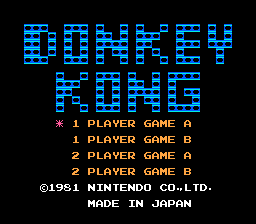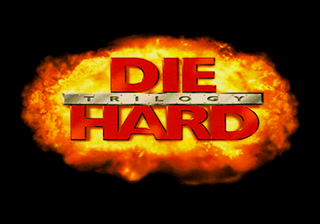Game: The Sims
Console: Sony Playstation 2
Developer: Maxis
Release Date: 12th January 2003
Known as "Sim People" in Japan, The Sims is exactly what it says on the Japanese tin. You control the simulated lives of little people, and help them achieve everyday tasks. As they get jobs and earn money you can improve their houses and buy them all sorts of expensive luxury items to brighten their days. While the idea of simulating real life in a video game might seem mundane, it quickly became the best selling PC game of all time after its release.
There are two main modes in the game; "Get A Life" (which focuses on moving your personal sim up through the world from their mother's house to the top tier of a career,owning a huge house and a monkey butler) and "Play the Sims" (which focuses on a neighbourhood of Sims, all of which you can control and help to further their lives. Alongside these, there's also unlockable two player games featuring special objectives.
The main gameplay is basically the same whichever mode you choose; Sims have 8 core needs which must be kept topped up via various means. Hunger, Hygiene, Bladder, Fun and Energy are pretty self explanatory, and I'm sure you can imagine how these are topped up. Comfort can be improved by sleeping in a bed (the more expensive, the better) or resting on a chair, Social can be improved by making friends and talking to other Sims, and the Room need can be met by placing visually pleasing (or just expensive) items in the room the Sim is currently occupying.
Get a Life mode gives the player various challenges that they must complete before moving up in the world, usually 4 per level, relating to their job, possessions or the people around them. You're also able to unlock new items for purchase on the first playthrough of this mode. While it is a little linear, its good for learning how to play the game and unlocking some cool items for other modes.
The choice of career paths available is good although once you're in a particular path there's no choice of direction, save for upwards (or downwards if your performance is too poor). Although at first its interesting to see the progression of some careers, once you've seen them, there's nothing new to discover. Customisation wise, you can choose what sims wear and even look like to an extent, as well as personality features of created Sims. This determines their actions in some situations and who they get on with in conversations.
While it's fun to control the lives of Sims to an extent, if you want to expand their houses and possessions, it can be quite a long grind until you have the job/money with which to do so. Playing through the game "properly" can become a cycle of commanding your sim to do the same activities day after day until you're too bored to continue. This is especially true in Play The Sims mode where there's no goals for the player to work toward achieving.
The only real criticisms of the game I have other than the above is how long it seems to take Sims to do everyday tasks. Making and eating breakfast can take an hour in game time, and a lot of other activities also seem to take far too long compared to their everyday counterparts. When the sims have a lot of cram into their day it's infuriating to watch them spend half an hour rubbing their eyes in an attempt to wake up.
Graphically, the Sims are a little blocky up close but the environments generally look alright and there's not much to complain about. The inclusion of an option to turn walls on and off was a good idea, considering the angle of the gameplay. Musically the game features some nice interludes during build and purchase menus as well as a little music on the radio. The vocal work can get irritating at times as characters repeat the same phrases in Simlish constantly, but aside from this it works better than a real language in some aspects.

Overall the first game in the series has a lot of fun aspects and can be fairly entertaining especially to those new to the game. There's a good amount of items and house building options and expansion packs for the game to keep it interesting. The two player modes also add interest, but personally I find that there comes a point where there's nothing else to do in the game, and your Sims are locked into their earning/spending routine. I do find myself coming back to the game every now and then but only in short bursts.
Rating: 73/100
Grade: C
Game: The Urbz: Sims In the City
Console: Sony Playstation 2
Developer: Maxis
Release Date: 9th November 2004
The black sheep of the Sims series, The Urbz attempted to give a new spin on the classic formula before the Sims 2 was released. It feels much like a stopgap between the two games controlwise, as the player uses essentially the same control method as in the first game, but with the menu dynamic and graphics more akin to the second. The player lives in apartments in various districts and attempts to gain reputation with other Urbz in the city. Most of the gameplay takes place in the bustling towns rather than at the home of the player.
In the Urbz, the apartment is almost like a base for sleeping, washing and topping up your Urb's needs enough to venture out to the city. Jobs, socialising and purchasing of items all take place in the city and unlike before, the jobs consist of button pressing minigames that the player has to beat to do well at the jobs rather than hours of waiting for a sim to return home. This is a good feature since perhaps the most boring part of any sim day is waiting for them to get back from work.
New features of the game include "Power Social" moves, used to gain reputation and impress other Urbz, pets, and countless menus of social moves which can be a pain to navigate. In order to high five a fellow Urb, the player has to select the with the cursor, choose to interact, greet them, and then select a high 5 from the list of greetings. While what you say and do may be important to your real life reputation, this degree of choice feels almost unneeded here.
There's a good selection of items for your apartment, even if its not the focus of the game. Fans of building mansions in The Sims may find the space a little tough to work with, but its something that you get used to. Customisation options for your Urb are plentiful with different styles being popular in each district. When designing an Urb though, there's not all too much choice with regard to facical and bodily features. I counted a total of 3 possible haircuts for my particular character, which was somewhat disappointing.
Graphically the game looks nice with the city locations fairly well designed and the Urbz fairly nicely detailed, if a little oddly proportioned. Needs in the game are basically the same as those in The Sims, and its interesting to see how they're worked into each job that you're able to do. The game features music from the Black Eyed Peas, and even the members of the band at points. It's not too bad and gives the game a definite urban feel.
Overall The Urbz doesn't deliver a massively addictive or memorable gameplay experience, but does use the features of the Sims series to make a game that's markedly different but has a good concept and some fun moments. A viable alternative for those bored by the daily routine of work and sleeping from the first game, I'd suggest this is aimed at a slightly younger audience but is a rewarding play for those willing to give it a go. The only real criticism I'd aim at the game as a whole is that moving up through its social scene can become a tad repetitive and there's less replay value to it once the player has completed the game than in the main series.
Rating: 65/100
Grade: C
Game: The Sims 2
Console: Sony Playstation 2
Developer: Maxis
Release Date: 24th October 2005
The Sims 2 featured a lot of changes from the formula of the original game. In addition to the classic pillar 3rd person control method, the default control option was changed to an in body 3rd person control, where players were able to move their selected Sim around rather than commanding them to do activities from the items they needed to interact with. The ability to follow your Sim via the pillar control method was not included, which is a shame since it made things easier for the player.
The goal system in Get a Life mode was also changed, with shorter term goals taking the place of the long term aims to move up in the world. Instead, these new goals earn aspiration points, used to unlock new items of furniture and other luxuries. While this makes the game less linear overall, there are times when the aims are strangely simple ("Talk to another sim", or "Buy a bed worth more than $50"), and others when the aims seem far out of reach.

There are more customisation options and items than in the first game and whilst this does give a wealth of choice to the player, it doesn't make the gameplay any better. I understand the need for personalisation in games like this, and there's definitely more to select from but there are reasons why I find The Sims 2 a little unenjoyable. Firstly the aforementioned control methods make gameplay less easy than it was in the first game, with the new control method requiring the player to journey over to everything they wish to interact with and then select the items from the menu.
Secondly, the needs bars are much less easy to assess, tucked away as small vertical gauges so that it's hard to tell the difference between a sleepy sim and one that is going to pass out from exhaustion, and lastly (I'm not sure whether this is just the ps2 copy of the game) whenever the game goes to load something, there's a slight pause where the game just freezes up before actually doing anything. Sometimes the audio lags behind also, which leads it to feel poorly programmed and buggy.

Graphically the game has been somewhat improved although I still wouldn't say it looks good. The characters are inbetween being nicely styled and looking weird, and a lot of the items seem like failed jokes by the game staff. It's probably easier to have some fun with The Sims 2 if you're just playing around with items, than the first game, but playing the game seriously feels less rewarding. Musically, there's more to choose from and menu music is pleasant but perhaps not as charming as the original game.
Overall The Sims 2 was a disappointment for me, the changes that Maxis made to it felt either like bad ideas or rushed versions of decent concepts. The new items and customisation options are good, but you'll never use them all and a lot of them will go unused if you're anything like me. Other than that you're left with a career mode that I feel works less well than in the original game, and a neighbourhood mode that's more fun (especially in two player) but only for a little while.
Rating: 60/100
Grade: D
























































